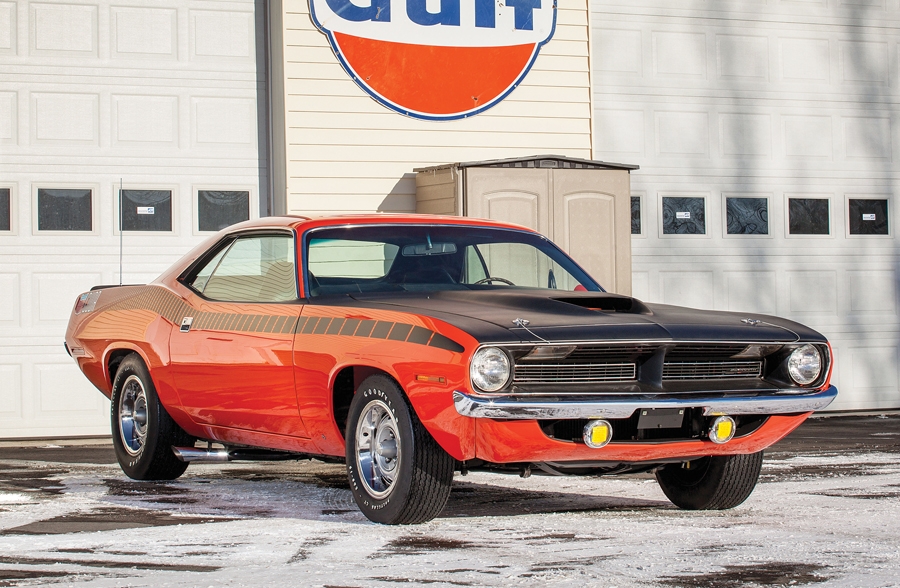Chassis Number: BS23JOB294273
Presented in striking Tor-Red with AAR graphics, this Plymouth has looked “race-ready” since day one. It includes an AM radio, Rallye dash, center console with Slap Stik for the automatic transmission, black vinyl bucket seat interior, Rallye wheels, space-saver spare tire, jack and sidepipes with new mufflers.
This is an original AAR edition with a properly date-coded block that has been restamped to match this car. This 340 Six Pack V8 is connected to the original transmission, and the rear end is also original to the car.
Included in the sale of this exciting California-built machine is a copy of the original build sheet and also a window sticker copy. Additionally the ’Cuda has a written report from Galen Govier, and in December 2013, a validation report was issued from MMC Detroit.

